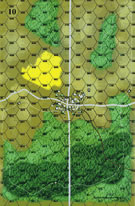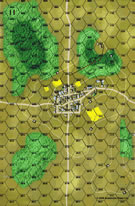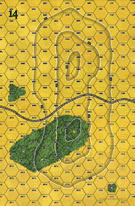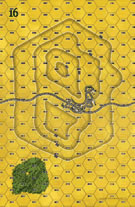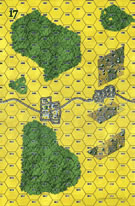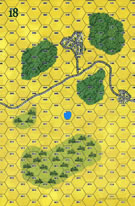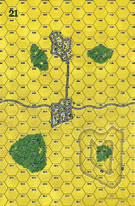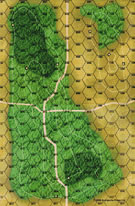|
Lone Star Iron Curtain #11 |
||
|---|---|---|
| (Defender) United States | vs | Soviet Union (Attacker) |
| Formations Involved | ||
|---|---|---|
| Soviet Union |  |
12th Guards "Mozyrskaya" Mechanized Division |
| United States |  |
49th "Lone Star" Armored Division |

| Total | |
|---|---|
| Side 1 | 1 |
| Draw | 0 |
| Side 2 | 0 |
| Overall Rating, 1 vote |
|---|
|
3
|
| Scenario Rank: --- of 913 |
| Parent Game | Iron Curtain |
|---|---|
| Historicity | Alt-History |
| Date | 1948-09-01 |
| Start Time | 22:00 |
| Turn Count | 48 |
| Visibility | Day |
| Counters | 150 |
| Net Morale | 1 |
| Net Initiative | 1 |
| Maps | 9: 1, 10, 11, 14, 16, 17, 18, 21, 9 |
| Layout Dimensions | 129 x 84 cm 51 x 33 in |
| Play Bounty | 217 |
| AAR Bounty | 171 |
| Total Plays | 1 |
| Total AARs | 1 |
| Battle Types |
|---|
| Road Control |
| Urban Assault |
| Conditions |
|---|
| Off-board Artillery |
| Scenario Requirements & Playability | |
|---|---|
| Battle of the Bulge | Maps + Counters |
| Eastern Front | Maps |
| Iron Curtain | Base Game |
| Road to Berlin | Maps + Counters |
| Introduction |
|---|
|
As the Cold War heated up, the United States formed a pair of National Guard armored divisions, one in Texas and on in the northeastern states. The U.S. Army had masses of leftover equipment following World War II; just how useful it would have been on the post-war battlefield is open to question. |
| Conclusion |
|---|
|
Soviet war plans eventually came to include multiple echelons of units, attacking the West in overlapping waves. As the first echelon became ground down by combat, the second would move up in its place. and so on. By the late 1940s many of the divisions that had conquered Germany had returned to their home military districts. The 15th Guards Cavalry Division instead went to Brest-Litovsk, on the Soviet-Polish border, and there was converted to a mechanized division. On the American side, the 49th "Lone Star" Division would eventually be folded into the National Guard's famous 36th "Texas" Division when armored divisions left the Guard order of battle. |
| AFV Rules Pertaining to this Scenario's Order of Battle |
|---|
|
| 1 Errata Item | |
|---|---|

|
All Guards T-34/85 tanks should have AT fire values of 7-7. (Shad
on 2010 Dec 15)
|
| Outflanked! | ||||||||||||
|---|---|---|---|---|---|---|---|---|---|---|---|---|
Setup: The Americans setup, dug-in, tentatively in the middle of the map, with three equal groups blocking the three east-west roads, with some reserves on the very western side of the board. This forces the Soviets to march all the way across the map to clear even one of the roads, opening them up to American counterattacks from the north and south. Play: The Soviets split their force between the SMG's and regular infantry, with the infantry moving due west along the middle road, while the SMG's ride on tanks flanking the main force to capture the north-south road. Within two hours the Soviets engage the Americans on Board 9, and the flanking units attempt to cutoff some American reinforcements from the duel towns. They succeed in the north, but fail in the south. The battle quickly turns into masses of assaults, with ten assaults in progress at once, with the Americans gained a lead early in the game, using their dug-in positions to best effect. Eventually their low morale begins to catch up with them, and the tide turns to the Soviets advantage. However, after six hours of the brutal cycle of assaulting, recovering, assaulting, and recovering, both side take a step back to consolidate and mount a second offensive. The Soviets launch themselves at the Americans once again, with much better success than the first attack, but the Americans still put up a defensive, and by the end of the second round of assaults the battle comes to a slow end, almost a stale mate. Even though the Soviets won the battle for the center of the map, they fail to clear the Americans from the main east-west road. Result: American Minor Victory. The Step Loss Counts stands at 55-48, with the Soviets having a seven step lead. |
||||||||||||
| 0 Comments |

 IrCu010
IrCu010 




